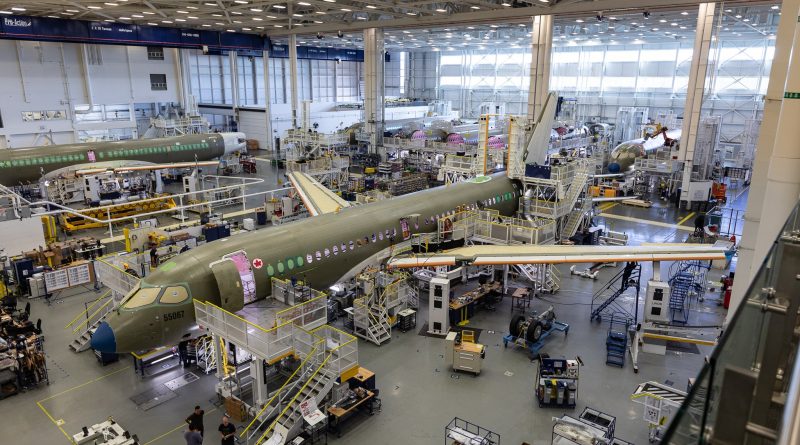How Air Canada will use its A220-300’s
We had a phone conversation with Air Canada’s Vice President Fleet Planning, Mr Mark Galardo. The interview focused on the deployment of the A220 in the next twelve months.
The original planning
Air Canada’s fleet management plan calls for the delivery of the first A220 in December 2019. An additional 14 will be delivered in the course of 2020, including 10 to 11 during the first half of the year. Air Canada prefers to receive their aircraft before the peak summer season and this was planned. Last week, we discussed the possibility of Air Canada taking over planes destined to Redwing. On that point, Mr. Galardo was very clear: No, Air Canada will not take them.
Approximately half of the A220-300s that Air Canada will receive in 2020 will be on routes currently served by the E-190. Mr. Galardo pointed out that to understand Air Canada’s Fleet Management Plan, do not do 1: 1; replacement assumption: wich would mean that one A220 would replace one E-190 and one MAX would replace one A320. The fleet renewal process is much more complex; Air Canada will keep some of its A319s and A320s in service for a few more years. By 2020, it will also put five more CRJ-900s into service.
Some of the new A220s will be deployed on existing routes to increase their frequency or capacity. But as announced in the press release on the subject, the A220 will also be used to open new routes. Air Canada wanted to open the Montreal-Seattle route for some time. But the E-190 could not do the distance and the B737MAX is too big. With a configuration of 12 seats in business class and 125 in economy, the A220-300 makes this route profitable.
Seattle
Mr. Galardo says the GDP growth in the Seattle area is 5% to 6% a year. The A220-300 allows Air Canada to take the lead on competition with the Montreal-Seattle route. Being the first airline to open a route is an important strategic advantage. The volume of passengers between the two cities does not justify the Montreal-Seattle route alone; according to Mr. Galardo, Montreal’s hub role is helping to fetch a surplus of transatlantic passengers from and to Seattle.
In May, Air Canada will open Montréal-Seattle and Toronto-San-José with the A220. Air Canada is also evaluating the possibility of using the A220 on the Montreal-Mexico route. The distance is not very big, approximately 2010 nm, but the altitude of Mexico is a problem. Air Canada is assessing whether it will have enough payload from Mexico City with the A220.
Transatlantic flights
We asked Mr. Galardo if Air Canada planned to use the A220 on transatlantic flights. He tells us that the prevailing winds from west to east are problematic. To be able to make the crossing back, the A220-300 needs to be substantially lightened. Only the configuration with 45 seats in business class allows round trip non-stop. It’s a niche market that Air Canada does not intend to attack.
>>> Follow us on Facebook and Twitter


” To be able to make the crossing back, the A220-300 needs to be substantially lightened. “.
And the A220-300-LR? 🙂
En passant,dans le texte “witch”=”sorcière”, il faut écrire “which”=”lequel”. Mais pour vrai, la qualité de l’anglais s’améliore, je voyais pas mal plus d’erreurs auparavant, vraiment une belle progression (quoique c’est l’info qui est importante)! En passant, je ne suis pas parfait moi non plus mais on peut s’aider 😉 Lachez-pas, vous faites une bonne job!
The witch as vanish. First remember that Airbus as increased the MOTW of the A220-300 by 5 000 pounds last summer without any majors changes to the aircraft except for increasing the volume of fuel into the thanks.
Adding an other 6 000 to 7 000 pounds will require a new thank and an increase in the engine trust and maybe some modifications to the flaps to increase lift at low speed. But these changes wont be free, and I think Airbus is going that way because it will bring more revenu.
The 108 to 133-seat CS100 (now A220-100) made its maiden flight on 16 September 2013, was awarded an initial type certification by Transport Canada on 18 December 2015, and entered service on 15 July 2016 with Swiss Global Air Lines. The 130 to 160-seat CS300 (now A220-300) first flew on 27 February 2015, received an initial type certification on 11 July 2016, and entered service with launch customer airBaltic on 14 December 2016. Early operators recorded better-than-expected fuel burn and dispatch reliability, as well as positive feedback from passengers and crew.
The 108 to 133-seat CS100 (now A220-100) made its maiden flight on 16 September 2013, was awarded an initial type certification by Transport Canada on 18 December 2015, and entered service on 15 July 2016 with Swiss Global Air Lines. The 130 to 160-seat CS300 (now A220-300) first flew on 27 February 2015, received an initial type certification on 11 July 2016, and entered service with launch customer airBaltic on 14 December 2016. Early operators recorded better-than-expected fuel burn and dispatch reliability, as well as positive feedback from passengers and crew.